Not sure what’s growing in your lake or pond? Aqua Services’ Aquatic Weed Identifier is a visual guide designed to help lake owners, property managers, and community associations recognize common invasive and nuisance aquatic plants found throughout the Southeast and beyond.

Hydrilla: (Hydrilla verticillata) Hydrilla is a submersed bottom-rooted perennial with leaves growing in whorls of 5-7. The leaves have sharp-toothed edges and tiny spines on the underside of the midvein. This plant has single 2 – 4 mm. wide, white or translucent flowers.

American Pondweed: (Potamogeton nodosus) American pondweed is a submersed bottom-rooted perennial. It consists of waxy, floating elliptical leaves. It also has very long and thin, alternating submersed leaves. This plant has a flowering spike of 4 – 6 cm. long.
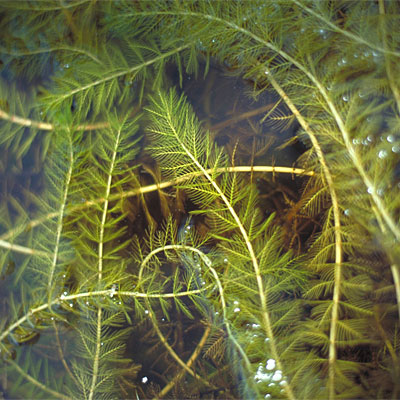
Eurasian Watermilfoil: (Myriophyllum spicatum) Eurasian watermilfoil is a submersed bottom- rooted perennial. The stem is round with whorls of four feather-like leaves, most often with 12 to 24 finely dissected segments per side. This plant is characterized by its elongated flowering spikes that rise 5 – 8 cm. above the water.
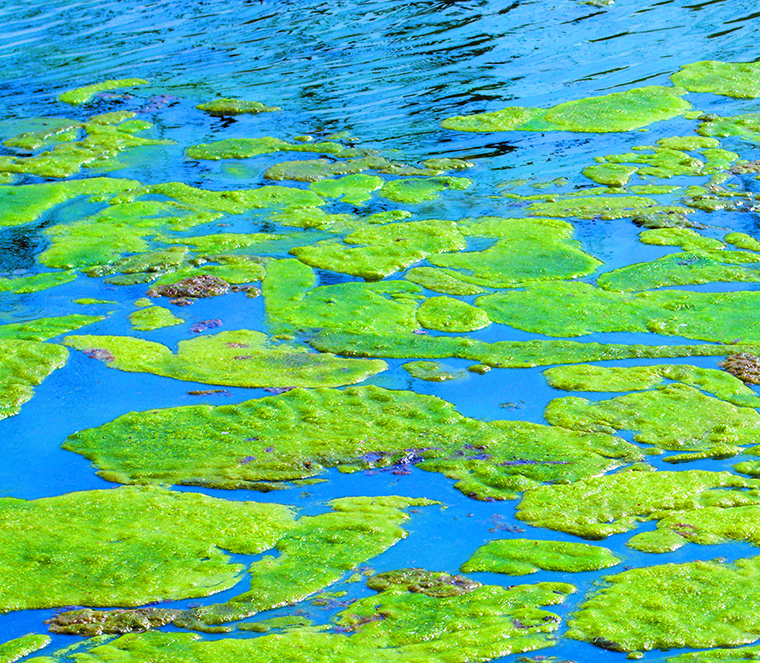
Filamentous Algae: (Spirogyra spp.) Filamentous algae consist of several different species that can usually only be identified with the aid of a microscope. These are alga composed in rows of cells that grow from the bottom and may form large mats of dead material on the surface of the water.
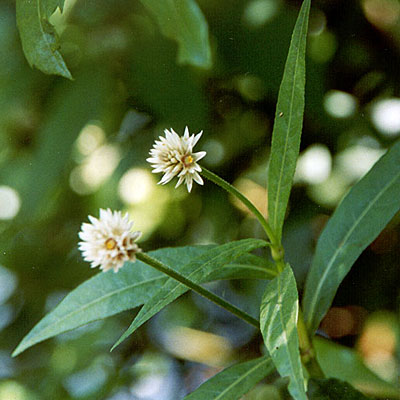
Alligator Weed: (Alternanthera philoxeroides) Alligator weed is an emergent perennial with hollow, trailing stems which often forms floating mats. The leaves are 3-5 cm. long and grow opposite each other along the stem. The leaves are narrow and generally taper toward the stem and have distinct middle veins. The flower heads are borne on stalks rising from the leaf axil and are composed of numerous, small white flowers compacted into a rounded cluster.

American Lotus: (Nelumbo lutea) American lotus is an emergent perennial with stout stalks that rise up to 1 meter above the water. The stalks support round, blue-green leaves up to 60 cm. in diameter. These same leaves also occur floating on the surface of the water. Solitary pale yellow flowers occur on stalks and open up to 25 cm. wide.
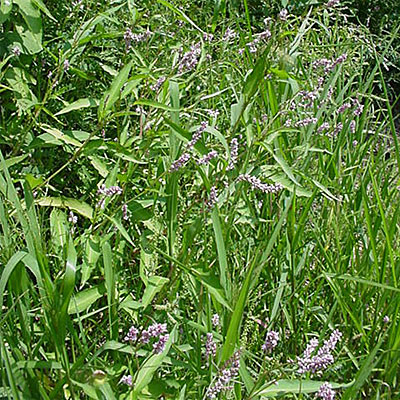
Smartweeds: (Polygonum spp.) The smartweed pictured is representative of many of the smartweeds throughout the southeastern U.S. A particularly noxious aquatic species of this group is giant smartweed (Polygonum amphibium). It is a mat-forming perennial first having horizontal stems with floating leaves, later producing emersed stems. Leaves of erect stems are alternate, 4-6 cm wide and up to 15 cm long with a sharp, pointed tip. The flowering heads are terminal usually singular, but sometimes two. The flowering heads are cylindrical , 4-15 cm long and about 1 cm in diameter, and composed of a dense cluster of small pink to scarlet flowers.
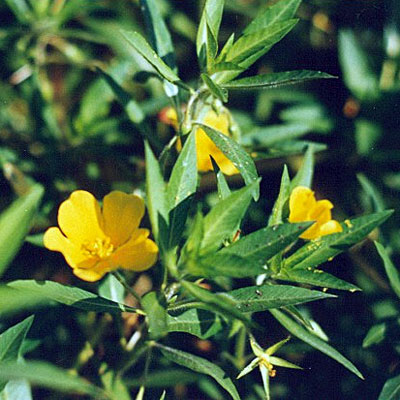
Water Primrose: (Ludwigia hexapetala) Water primrose is a mat-forming perennial with floating or creeping stems. Floating leaves are usually rounded or spoon-shaped and often occur in rosettes. Emergent leaves are elliptical and finely pubescent (hairy). The flowers have 5 bright yellow leaves up to 1.5 mm. long and occur on stalks rising from the axils of upper leaves.
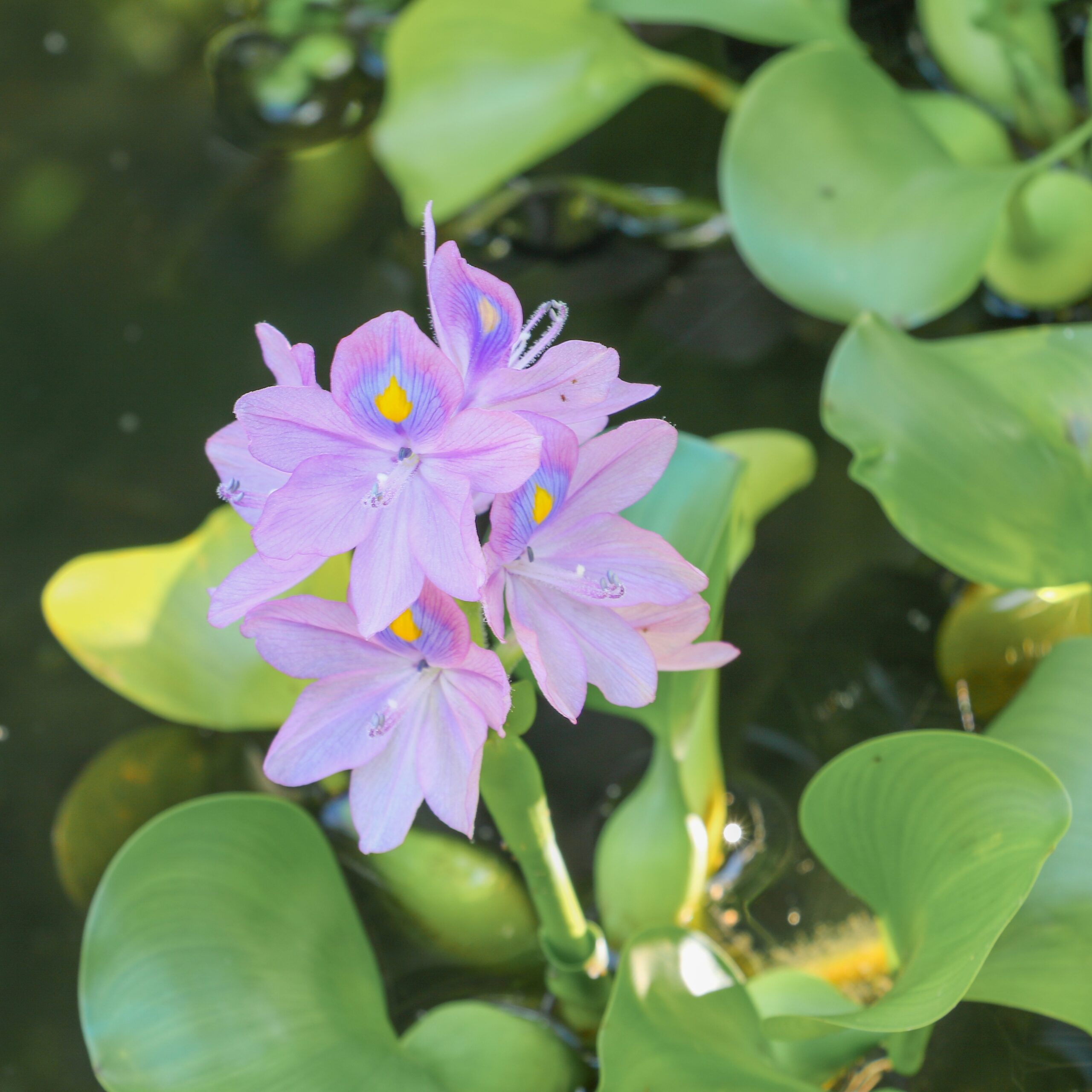
Water Hyacinth: (Eichhornia crassipes) Water Hyacinth is a floating plant. Daughter plants are often connected by runners that hold large mats together. The stems are typically swollen and filled with a spongy tissue that acts as a float. It has very long, string purple or black roots.
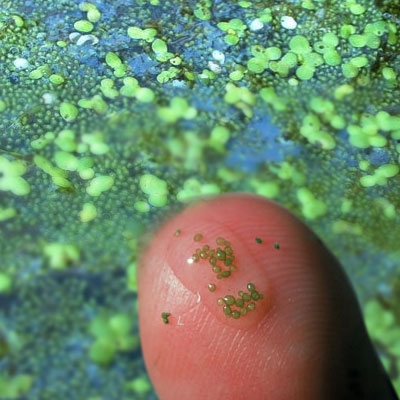
Watermeal: (Wolffia columbiana) Watermeal is a small, free-floating plant with a green circular frond 0.5-1 mm in diameter, and 0.25-0.5 mm thick. This plant lacks roots and a handful feels gritty like wet meal.